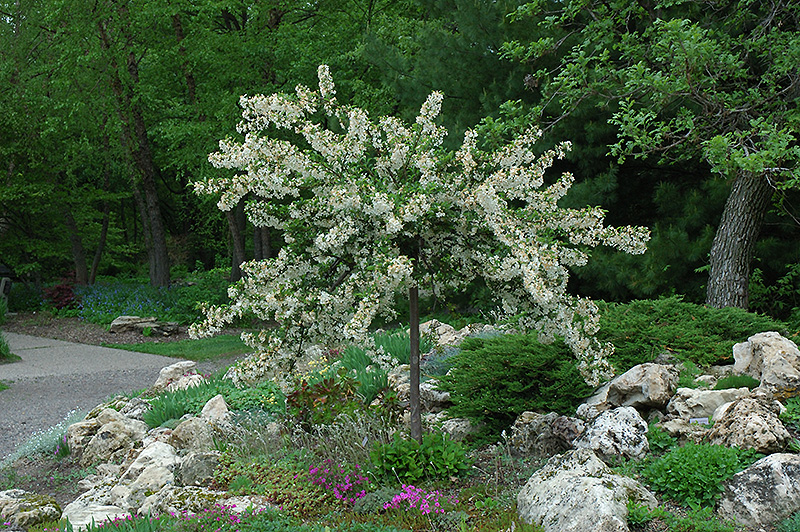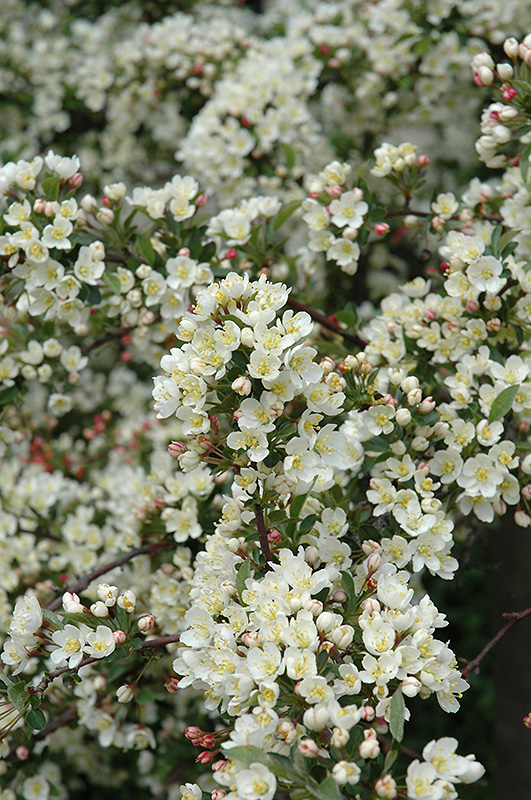Height: 6 feet
Spread: 10 feet
Sunlight:
![]()
Hardiness Zone: 4a
Other Names: Sargent's Flowering Crab, Roseybloom, Crabapple
Description:
One of the most popular dwarf ornamentals, smothered in fragrant pink flowers in spring followed by red fruit in fall, artistic branching habit is very attractive; needs well-drained soil and full sun, makes a great accent in the mixed garden border
Pollinator Friendly Plants
Have your garden come alive and buzzing with activity with these pollinator friendly plant options. Look for plants tagged with this promotion title: "Pollinator Friendly Plants" to add to your garden. You can also look for pollinator plants by scrolling to the bottom of each plant page and looking for the "butterfly" symbol. Click "Learn more about this promotion!" for some more inspiration and articles from one of our growers, Monrovia!
Learn more about this promotion!
Ornamental Features
Tina Flowering Crab is covered in stunning clusters of fragrant white flowers with shell pink overtones and a pink reverse along the branches in mid spring, which emerge from distinctive cherry red flower buds before the leaves. The fruits are showy red pomes carried in abundance from early to mid fall. It has dark green deciduous foliage. The pointy leaves turn yellow in fall. The smooth brown bark and brick red branches add an interesting dimension to the landscape.
Landscape Attributes
Tina Flowering Crab is a dense spreading deciduous shrub with a more or less rounded form. Its relatively fine texture sets it apart from other landscape plants with less refined foliage.
This shrub will require occasional maintenance and upkeep, and is best pruned in late winter once the threat of extreme cold has passed. Gardeners should be aware of the following characteristic(s) that may warrant special consideration;
- Disease
Tina Flowering Crab is recommended for the following landscape applications;
- Accent
- General Garden Use
Planting & Growing
Tina Flowering Crab will grow to be about 6 feet tall at maturity, with a spread of 10 feet. It has a low canopy with a typical clearance of 2 feet from the ground, and is suitable for planting under power lines. It grows at a slow rate, and under ideal conditions can be expected to live for 40 years or more.
This shrub should only be grown in full sunlight. It prefers to grow in average to moist conditions, and shouldn't be allowed to dry out. It is not particular as to soil type or pH. It is highly tolerant of urban pollution and will even thrive in inner city environments. This is a selected variety of a species not originally from North America.


